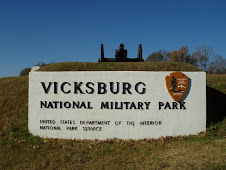
Recently a cousin told me that her grandmother told her that our second great grandmother, Julia Ann SHERROD, was a full blooded Cherokee. One of the interesting tools that will be available in our new VICK DNA project is something called “Native American Ancestry Finder”. The tool “scans a person's Ancestry Painting for distinctive signatures that indicate a Native American ancestor up to five generations in the past. It also takes into account the maternal and, if available, paternal lines, looking for Native American ancestry at any depth along those two branches of the family tree.”
Since Julia was my great great grandmother (four generations back), she fits within the window for the test’s high confidence level. My results said “Recent Native American ancestry is unlikely.”
My Ancestry Painting (above) shows why my autosomal DNA rules out Native American ancestry in my preceding five generations along all of my lines. I have no traces of anything but recent European ancestry. Additionally, my maternal haplogroup (from my mitochondrial DNA or mtDNA) of H2a2b1” is inconsistent with Native American ancestry along the maternal (mother's mother's mother's ...) line.” Since my mtDNA came from my mother and not from Julia my mtDNA haplogroup could be different than Julia’s. Since sometimes family stories, while not completely accurate, contain an element of true. Could Julia’s mother have been a descendant of a Native American woman and a European man (meaning Julia was not full-bloodied American Indian)? A female cousin who is a matrilineal descendant of Julia had her mtDNA tested. She also is haplogroup H, so Julia’s mother’s line was not American Indian.
Since I am a male, the tool could also check my patrilineal line. Again, my Y-DNA haplogroup of Q1a3* “is inconsistent with Native American ancestry along the paternal (father's father's father's ...) line.” Maybe I will be able to find a patrilineal descendant of Julia’s father who will test his Y-DNA just to see what his Y-DNA haplogroup is. By weaving the results of DNA testing of cousins in different lines together, I can learn a lot about my family’s history.
I have also been told by another cousin that my ancestor Stephen5 (Jacob4, Isaac3, William2, Joseph1) had American Indian ancestry. The extent of the ancestry was uncertain, but since the Native American Ancestry Finder found no evidence of an American Indian in my genetic make-up, I have to assume that if the story was true (and I have no evidence that it is), it would have had to have been a more distant ancestor than Stephen5.
Our new VICK DNA project will have many other features that our current VICK Y-DNA Surname Project does not have. I can’t wait to see what we will learn with these new tools.





